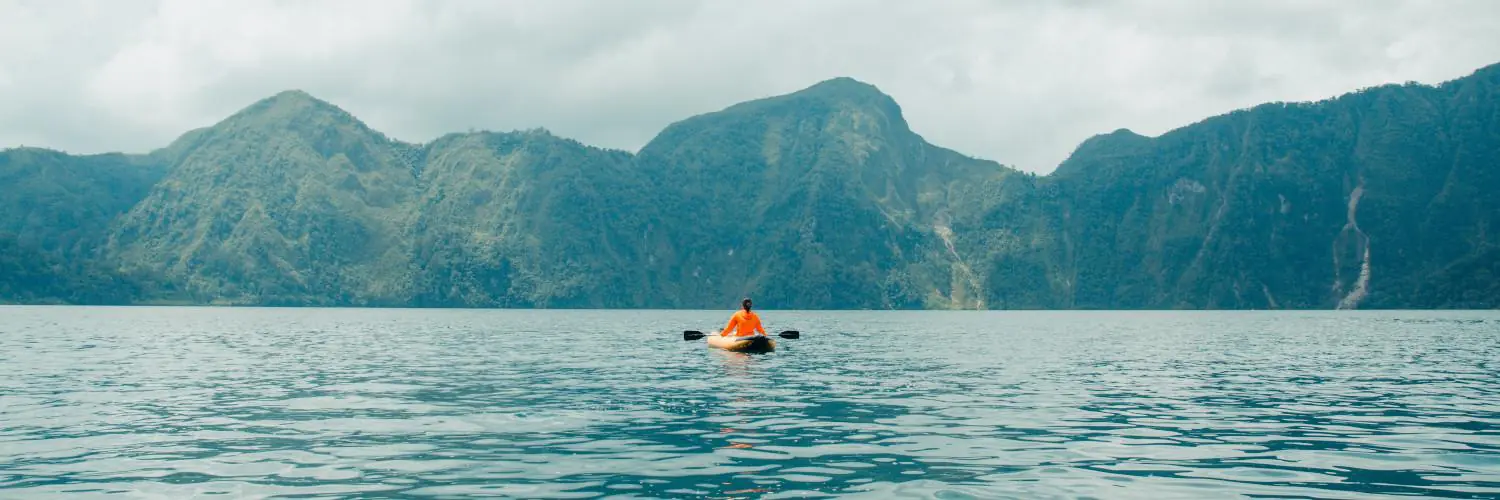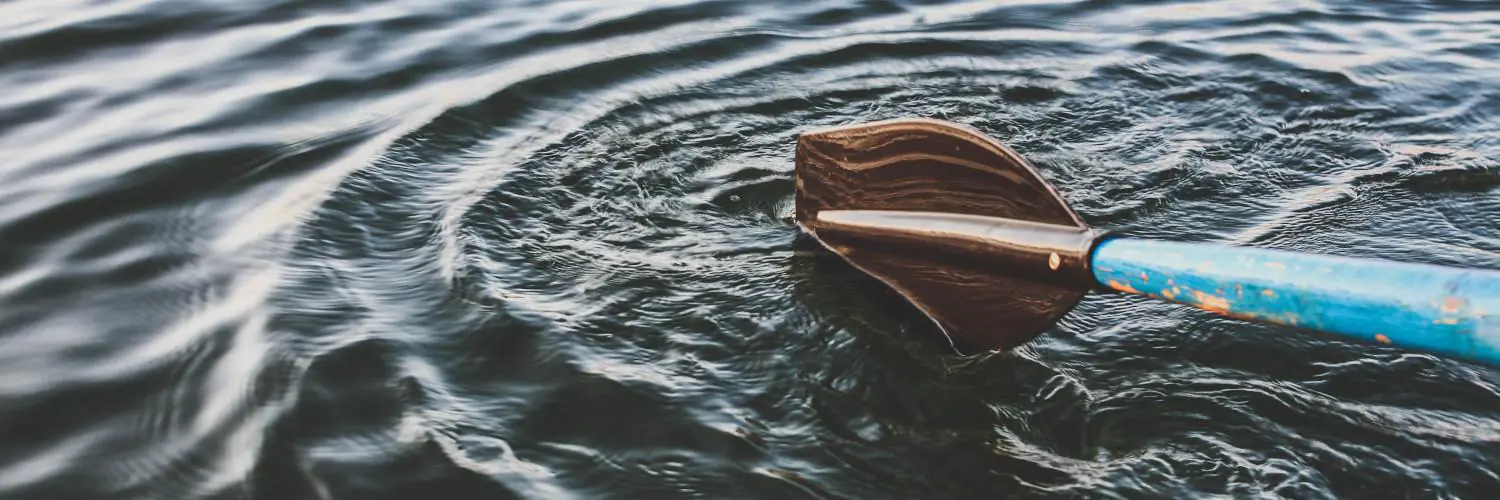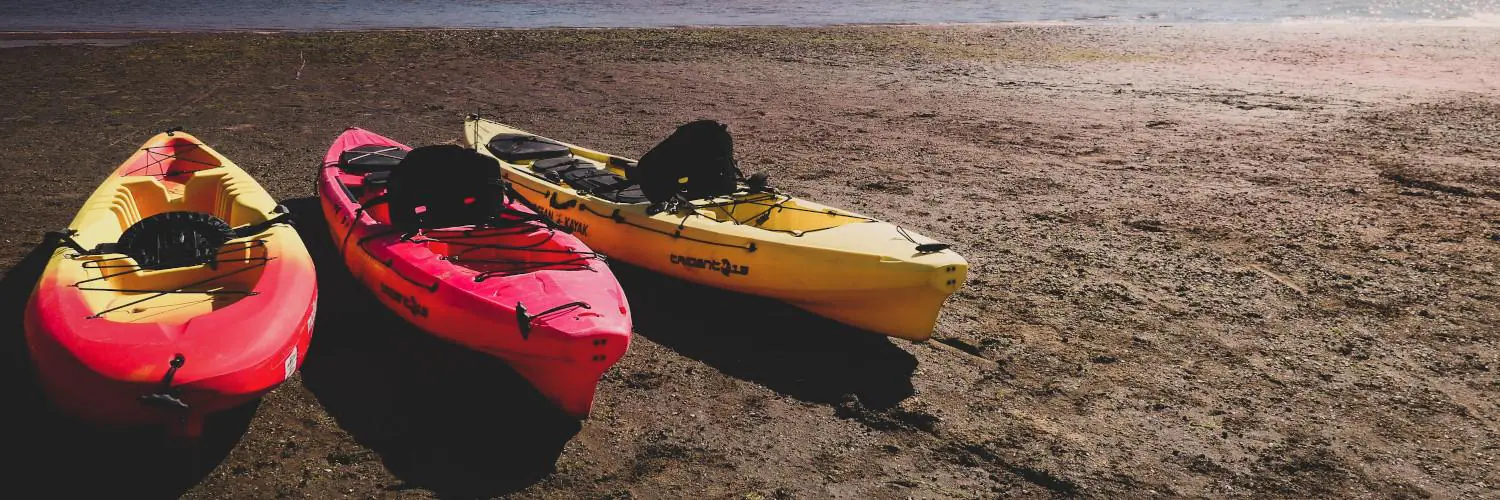Florida’s natural springs offer some of the clearest waters in the country, making them perfect for exploring by clear bottom kayak. These transparent kayaks let paddlers see straight through to the sandy floor, fish, and aquatic plants below. Clear bottom kayaking in Florida springs gives a direct window into the state’s unique underwater world.
Each spring has its own character—some flow through shaded tree tunnels, while others open into wide, bright pools. From the emerald waters of Rock Springs to the calm beauty of Silver Springs, these spots combine adventure with a peaceful connection to nature.
Whether someone wants to spot wildlife, take photos, or simply enjoy the quiet flow of spring water, clear bottom kayaking offers a simple and memorable way to experience Florida’s natural beauty.
Table of Contents
What Makes Clear Bottom Kayaking Unique in Florida Springs
Clear bottom kayaking lets visitors see the underwater world directly beneath them while paddling through Florida’s freshwater springs. The combination of transparent kayaks and crystal-clear water creates a calm, immersive way to explore fish, plants, and limestone formations that are usually hidden from view.
How Clear Kayaks Enhance the Experience
Clear kayaks are made from durable, transparent materials such as polycarbonate. This design allows paddlers to view the spring floor, aquatic life, and natural rock features without needing to snorkel or dive.
The water clarity in places like Silver Springs, Rainbow Springs, and Crystal River makes these kayaks especially effective. The light passing through the water enhances color contrast, making fish and vegetation easier to spot.
Many guided tours use clear kayaks to help visitors appreciate the gentle flow of the springs and observe how sunlight filters through the water. This quiet, low-impact activity encourages a slower pace, letting paddlers notice details like sand boils and freshwater vents that are often overlooked.
Benefits Over Traditional Kayaks
Compared to standard kayaks, clear models offer a more visual experience. Traditional kayaks block the view below, while clear-bottom designs open a full window into the spring ecosystem.
They are typically lightweight and easy to maneuver, making them suitable for calm spring runs and shallow areas. The flat-bottom shape provides better balance, which helps beginners feel stable while viewing underwater features.
Key differences include:
| Feature | Clear Kayak | Traditional Kayak |
|---|---|---|
| Visibility | Full underwater view | Limited to surface |
| Material | Transparent polycarbonate | Opaque plastic or fiberglass |
| Experience | Visual exploration | Surface-focused paddling |
Because of these traits, clear kayaks are often preferred for eco-tours and wildlife observation rather than long-distance travel.
Visibility of Wildlife and Scenery
Florida’s springs are home to manatees, turtles, fish, and aquatic plants that thrive in the constant 70-degree waters. Clear kayaks allow paddlers to see these animals in their natural environment without disturbing them.
In Crystal River, visitors often spot manatees gliding below. In Weeki Wachee or Rock Springs Run, small fish dart through eelgrass while sunlight reflects off the sandy bottom.
This level of visibility also helps paddlers understand how fragile spring ecosystems are. Observing the clear water and limestone formations firsthand can increase awareness of water quality and conservation efforts that protect these habitats.
Top Florida Springs for Clear Bottom Kayak Adventures
Florida’s freshwater springs offer calm, clear water that makes them ideal for glass-bottom or clear kayaks. Visitors can often see fish, turtles, and aquatic plants beneath them while paddling through shaded river corridors and open spring runs in central and north Florida.
Silver Springs State Park
Located near Ocala in central Florida, Silver Springs State Park is one of the state’s most famous and oldest spring destinations. The water stays around 72°F year-round and is known for its remarkable clarity.
Paddlers using clear kayaks can easily view underwater limestone formations and native fish species. The spring is also home to turtles, herons, and occasionally manatees during cooler months.
The Silver River, which flows from the main spring, provides several miles of gentle paddling through forested scenery. The park offers kayak rentals, including clear-bottom models, and guided tours for visitors who prefer an organized experience.
Visitors often combine kayaking with a walk through the park’s shaded trails or a stop at the historic glass-bottom boat dock, where the attraction first gained fame in the early 1900s.
Rock Springs and Emerald Cut
Rock Springs Run at Kelly Park in Apopka is another popular clear kayak location in central Florida. The spring’s constant flow creates a natural “lazy river” effect that carries paddlers through the Emerald Cut, a narrow, scenic stretch lined with limestone walls and dense vegetation.
The water remains shallow and crystal clear, making it easy to see small fish and aquatic plants beneath the surface. Because the current is gentle, this area suits beginners and families.
Visitors can rent clear-bottom kayaks nearby or bring their own. Early morning trips often provide the clearest visibility and fewer crowds. The park also offers picnic areas and short hiking trails for those who want to explore on land after paddling.
Crystal River and Other Popular Locations
Crystal River, located on Florida’s Gulf Coast, is well known for its winter manatee population. Clear kayaks allow paddlers to observe these animals in their natural habitat without disturbing them. The Three Sisters Springs area offers some of the best visibility and calm water for this experience.
Other good choices include Rainbow Springs, Blue Spring State Park, and Ichetucknee Springs, all known for their clear water and abundant wildlife. Each site provides rental options and easy access for launching kayaks.
These locations highlight the variety of Florida’s spring systems—from coastal rivers to inland parks—offering paddlers a chance to see the state’s freshwater ecosystems up close through the bottom of a transparent kayak.
Wildlife Encounters While Kayaking
Florida’s clear springs host a wide range of animals that thrive in calm, transparent waters. Visitors often see large reptiles, gentle mammals, and smaller aquatic species moving through the vegetation below or resting along the banks. These encounters highlight the natural diversity of the state’s freshwater ecosystems.
Alligators: Safety and Viewing Tips
Alligators live in many Florida waterways, including spring-fed rivers. They usually avoid people, but paddlers should still keep a safe distance. Staying at least 30 feet (9 meters) away helps prevent stress to the animal and ensures personal safety.
Kayakers should remain calm and quiet when spotting an alligator. Sudden movements or loud noises can cause it to retreat or feel threatened. Feeding or approaching them is illegal and disrupts their natural behavior.
Safety reminders:
- Keep hands and paddles inside the kayak near alligators.
- Avoid kayaking at dawn or dusk when they are most active.
- Never block their path to or from the water.
Most sightings occur from a distance, allowing safe observation of these important top predators in their natural habitat.
Spotting Turtles and Other Aquatic Life
Turtles are among the most common animals seen while kayaking in Florida springs. Species such as peninsula cooters, snapping turtles, and softshell turtles often bask on logs or swim near submerged plants. Their slow, steady movements make them easy to watch through a clear-bottom kayak.
The transparent hull allows paddlers to see fish like gar, sunfish, and bass gliding below. In shallower areas, small crustaceans and freshwater snails can also be visible.
To improve viewing:
- Paddle slowly to reduce surface ripples.
- Wear polarized sunglasses to cut glare.
- Avoid touching or chasing wildlife.
These simple habits help protect fragile aquatic habitats while giving paddlers a better look at the life beneath the surface.
Unique Animals: Manatees and Wild Monkeys
Manatees, often called sea cows, visit Florida springs during cooler months when the water temperature stays near 72°F (22°C). They move slowly and feed on aquatic vegetation. Kayakers should float quietly nearby, keeping at least 50 feet (15 meters) away to avoid disturbing them.
Wild rhesus monkeys, found in places like Silver Springs State Park, are another surprising sight. They live along the riverbanks and are best viewed from a distance. Feeding or approaching them can lead to aggressive behavior and is prohibited by park rules.
Together, manatees and monkeys show the range of wildlife that thrives in Florida’s spring systems—from gentle marine mammals to energetic primates adapted to forested shores.
Planning and Booking Your Clear Bottom Kayak Tour
Visitors can explore Florida’s spring-fed rivers through guided or self-guided clear kayak experiences. Understanding the booking process, cancellation policies, and what to expect helps travelers plan a safe and enjoyable trip on the water.
Guided Tours vs. Self-Guided Rentals
Guided tours offer structure and expert support. Trained guides lead small groups through areas such as Rock Springs Run or Silver Springs, pointing out wildlife like turtles, otters, and wading birds. These tours often include safety briefings, photo stops, and short breaks for swimming.
Self-guided rentals provide more independence. Paddlers can move at their own pace and spend extra time exploring quiet sections of the river. However, self-guided trips require more preparation. Participants must understand the route, follow local regulations, and bring their own safety gear.
Comparison Table
| Feature | Guided Tour | Self-Guided Rental |
|---|---|---|
| Guide Provided | Yes | No |
| Skill Level | Beginner to Intermediate | Intermediate or Experienced |
| Equipment Included | Yes | Often Yes |
| Flexibility | Fixed Schedule | Flexible Timing |
| Wildlife Education | Included | Self-Led |
Choosing between the two depends on comfort level, experience, and interest in learning about the ecosystem.
Reservation and Cancellation Policy Overview
Most tour companies in Florida require advance reservations due to limited kayak availability and small group sizes. Online booking systems typically confirm spots instantly, and same-day walk-ins are uncommon during peak seasons.
Cancellation policies vary. Some operators allow free cancellations up to 24–48 hours before the tour, while others may charge a small fee. Late cancellations or no-shows often result in a full charge to cover reserved equipment and guide time.
Travelers should review each company’s terms before booking. Weather-related cancellations, such as heavy rain or unsafe water conditions, usually qualify for a reschedule or refund. Always check email or text updates on the morning of the trip for any last-minute changes.
What to Expect on Your Kayak Trip
Clear bottom kayaks allow paddlers to see fish, aquatic plants, and sandy springs beneath the surface. Most tours last two to three hours and start with a short safety talk and paddling instruction.
Participants should bring water, sunscreen, and secure footwear. Personal flotation devices are required, and guides ensure everyone wears one correctly. The water temperature in many springs stays around 68–72°F year-round, making it refreshing for short swims.
Wildlife sightings are common but not guaranteed. Visitors may see turtles, birds, and sometimes small alligators. Groups travel at a steady pace upstream before drifting back downstream, offering both exercise and relaxation in Florida’s natural spring environments.
Essential Tips for a Safe and Enjoyable Experience
Clear kayaking in Florida’s springs requires preparation, awareness of conditions, and respect for the environment. Safety gear, weather planning, and following park rules help paddlers stay safe while protecting the natural beauty of the springs.
What to Bring and Wear
Light, quick-drying clothing works best since paddlers may get wet. A swimsuit, rash guard, or athletic shorts and shirt keep them comfortable. Water shoes or sandals with straps protect feet from slippery rocks.
Essential gear includes:
- Life jacket (PFD) – required for all paddlers
- Dry bag – keeps phones, keys, and snacks dry
- Hat and sunglasses – reduce glare from the water
- Sunscreen – use reef-safe or biodegradable types
- Reusable water bottle – stay hydrated in the heat
Many guided tours provide equipment such as paddles, PFDs, and clear kayaks. Visitors bringing their own should check that gear meets park safety standards.
Weather Considerations and Seasonal Advice
Florida’s springs stay around 72°F year-round, but air temperatures and weather vary. In summer, heat and humidity are high, and afternoon thunderstorms are common. Paddlers should plan morning trips to avoid storms and crowds.
Winter months bring cooler air and fewer bugs, making it a good season for longer paddles. Manatee sightings are more likely in cooler months when they move into warmer spring waters.
Before heading out, paddlers should check:
- Local forecasts for wind, storms, or lightning
- River flow and visibility updates from park websites
- Sunrise and sunset times to avoid paddling in low light
Carrying a lightweight rain jacket and keeping electronics sealed in dry bags helps in case of sudden showers.
Environmental Guidelines and Rules
Florida’s springs are sensitive ecosystems. Visitors should follow Leave No Trace principles to protect water quality and wildlife.
Key rules include:
- No feeding or touching wildlife, including manatees and monkeys
- Avoid standing or dragging kayaks on vegetation or riverbeds
- Pack out all trash, even small items like bottle caps
- Stay within marked waterways to prevent erosion and habitat damage
Using biodegradable sunscreen and non-toxic insect repellent helps reduce chemical runoff. Respecting these rules ensures the springs remain clear and healthy for future visitors.








